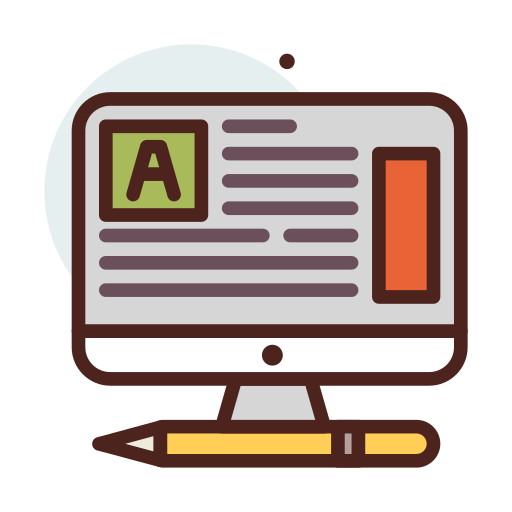The SAT has changed, but, with the Krupnick Approach, you’ll get the same elite test-prep services you always have.
The Krupnick Approach: Navigating the Digital SAT


Digital SAT Overview
As many of you know, the SAT has gone digital. At the Krupnick Approach, we demystify the new exam, customize it to your learning style, and deliver the test-specific and content-related rules to help you navigate the process successfully and efficiently. Using our proprietary data-driven approach to the digital test, our experts have analyzed thousands of official Digital SAT questions for test confidence and mastery.
Digital SAT Structure
The digital SAT suite, including SAT, PSAT 10, and PSAT 8/9, will be digital, adaptive, shorter, and re-formatted. As of Fall 2023, the digital PSATs are in place, paving the way for the first digital SAT starting in March 2024.

SAT Test Dates, Registration Deadlines, and Score Release Schedules
The Adaptive Testing Model
The digital SAT adopts a multistage adaptive testing model, differing significantly from the linear testing model used previously. Both sections (Reading and Writing & Math) are divided into two separate modules. The test delivery platform adjusts the difficulty of the questions after the first modules based on the performance of test takers.
For both Reading & Writing and Math, the first modules, which are identical for all students, consist of questions across a broad range of difficulty (easy, medium, and difficult questions).
Students whose accuracy is greater than or equal to 70-75% correct on the first modules will progress to harder, higher-difficulty second modules. Students whose accuracy is less than 70-75% will receive lower-difficulty second modules. Those who progress into the harder second modules will be correspondingly tracked into higher score ranges (about 100 points higher per section).

Reading and Writing
The DSAT Reading and Writing, once less felicitously called “Critical Reading & Writing & Language,” is now composed of two modules– each featuring 27 multiple-choice questions and a 32-minute completion time. While the section does assess skills like analyzing words in context, using textual evidence, and knowing rules of grammar and usage, it is also a category-based test. This means that, regardless of the difficulty or linguistic framing of the questions, success on this section continues to favor pattern recognition, rule application, and trap identification. Much like history, the SAT Reading and Writing doesn’t repeat itself, but it rhymes.

Mathematics
The DSAT Math section comprises two modules with 22 multiple-choice and student-produced response questions and a 35-minute standard completion time. The questions evaluate skills in algebra, quantitative problem-solving, data analysis, and advanced math topics. While superficially quite similar to the paper-and-pencil version, DSAT Math section now allows you to use a calculator on both sections. And by virtue of the adaptive nature of the modules, the sections contain questions that vary tremendously (in fact unreasonably) in difficulty.

Mathematics
The DSAT Math section comprises two modules with 22 multiple-choice and student-produced response questions and a 35-minute standard completion time. The questions evaluate skills in algebra, quantitative problem-solving, data analysis, and advanced math topics. While superficially quite similar to the paper-and-pencil version, DSAT Math section now allows you to use a calculator on both sections. And by virtue of the adaptive nature of the modules, the sections contain questions that vary tremendously (in fact unreasonably) in difficulty.
The Krupnick Approach to SAT Success
Unlock your full potential with our expert tutors and proven strategies, designed to help you achieve your best possible SAT score. We’re here to guide you through every step of your SAT journey.
Test Comparisons
Paper and Pencil SAT | Digital SAT | |
Standard Time | 3 hours | 2 hours, 14 minutes |
Extended Time (1.5x) | 4.5 hours | 3 hours, 21 minutes |
| # of Questions | 154 questions | 98 questions |
| Minutes/Question | 1.17 | 1.37 |
Test Format | Linear | Adaptive |
Test Section Sequence | Reading (65 mins) Writing and Language (35 mins) Math Non Calculator (25 mins) Math Calculator (55 mins) | Reading & Writing Mod. 1 (32 mins) Reading & Writing Mod. 2 (32 mins) Math Mod. 1 (35 minutes) Math Mod. 2 (35 minutes) |
Calculator Policy | Calculators are permitted only on second math section. | Calculators are permitted on both Math modules, including the on-screen Desmos graphing calculator. |
Average Passage Length | Reading: 600-750 words Writing & Language: 350-450 words | 25-150 words |
DSAT | ACT | |
Timing | 2 hours, 14 minutes | 2 hours, 55 minutes |
Number of questions | 98 questions | 215 questions |
Minutes/Question | 1.37 | 0.81 |
Test Format | Adaptive, Digital | Paper/Pencil, Linear |
Sections | Reading & Writing Math | English Math Reading Science |
Scoring | 400-1600 | 1-36 |
Student Strengths | Students better suited to the DSAT are typically those who: 1) Prefer a shorter format (DSAT is 2 hrs 14 mins, ACT is 2 hrs 55 mins). 2) Prefer a slower-paced test. 3) Are looking to emphasize math skills (given that math is 50% of the DSAT). 4) Prefer shorter passages for reading and punctuation/grammar. 5) Feel more comfortable with challenging vocabulary questions (DSAT includes 8-10 vocabulary-in-context questions). | Students better suited to the ACT are typically those who: 1) Prefer a longer format 2) Can tolerate a faster paced test. 3) Are looking for more rules and formulas. (20% of the ACT questions are based on “magic tricks” vs. 14% of SAT questions). 4) Feel more comfortable with charts, graphs, figures, and tables. (These are tested on the ACT Science section). 5) Feel more comfortable with the meat-and-potatoes paper/pencil style of testing. |
The Structure of the Digital SAT
| Section | Standard Time Duration | Number of Questions | Time per Question | Format |
| Reading & Writing Module 1 | 32 minutes | 27 questions | 1 minute and 11 seconds | Linear |
| Reading & Writing Module 2 | 32 minutes | 27 questions | 1 minute and 11 seconds | Adaptive |
| Math Module 1 | 35 minutes | 22 questions | 1 minute and 35 seconds | Linear |
| Math Module 2 | 35 minutes | 22 questions | 1 minute and 35 seconds | Adaptive |
| Total | 2 hours and 14 minutes | 98 questions | 1 minute 22 seconds |
| Section | Standard Time Duration | Number of Questions | Time per Question | Format |
| Reading & Writing Module 1 | 32 minutes | 27 questions | 1 minute and 11 seconds | Linear |
| Reading & Writing Module 2 | 32 minutes | 27 questions | 1 minute and 11 seconds | Adaptive |
| Math Module 1 | 35 minutes | 22 questions | 1 minute and 35 seconds | Linear |
| Math Module 2 | 35 minutes | 22 questions | 1 minute and 35 seconds | Adaptive |
| Total | 2 hours and 14 minutes | 98 questions | 1 minute 22 seconds |
Calculator Policy Details
In this digital era, the calculator policy undergoes a transformation. The on-screen Desmos calculator, a substantial tool, is now permitted for the entire Math section. Additionally, students may still bring their own graphing calculator. The comprehensive calculator policy ensures students have the tools they need to excel in the Math modules.

Subscribe to our email newsletter!
Are you eager to stay on top of the latest updates, fascinating stories, and exclusive insights? Look no further! Join our exclusive email newsletter community and embark on a journey of knowledge, inspiration, and discovery.

Accommodations
For students requiring accommodations, the digital SAT provides a range of options to ensure a fair testing experience. It is crucial for students to explore and apply for accommodations that align with their needs. The Krupnick Approach offers guidance in understanding the available accommodations and navigating the application process.

Interactive Features
Embracing the digital format, the SAT introduces interactive features to enhance the test-taking experience. Students can now flag questions for review, providing a convenient way to revisit challenging items. The inclusion of a reference sheet offers quick access to essential information, streamlining problem-solving and decision-making during the examination.

Our Approach
Embarking on the journey to excel in the digital SAT requires tailored guidance, and The Krupnick Approach is here to provide the best in customized, data-driven, one-on-one support. Our tutoring programs align with each student’s unique needs, using systematic design, personalized tutoring, a proprietary database, and official tests to guide instruction and support growth and confidence.
See what our students and parents have to say about their experiences
Jordan went from a 1200 to a 1440 on the SAT. It was a great experience.
SAT Test Prep Family, Parent(s), Glenbrook North
When should I take the digital SAT?
Just as they say about voting, the best time to take the new SAT is early and often. This is the case especially inasmuch as these tests do not generally reflect what you learn in school. This means that, with the exception of Math—which does require rudimentary understanding of advanced algebra concepts—there’s really no time that’s too early to start prepping.
With that said, we usually encourage students to begin incorporating SAT prep into their life routines the summer after sophomore year. The advantage of starting over the summer is that it’s not competing with the full-time jobs of high school and extracurricular activities. The advantage of starting after sophomore year is that students have generally had enough math to get them through 95-98 percent of the SAT and are by then in a great position to get ahead of the curve. Think of it this way: if you start early, you’ll be done with these tests by junior fall or winter. And while everyone else is still suffering the tortures of the damned, you’ll be able to spend your after school time on something else… like college prep!
The other advantage of starting early is that most colleges (our analysis suggests 65-70 percent) superscore the SAT, which means that having more opportunities to take these exams will likely redound to your credit.


What's a Good SAT Score?
A good score, like curved space time, is relative. It’s relative to your personal standards and relative to the standards of the schools to which you’re applying. (To a certain extent, we might say that good scores are also relative to the standards of your parents and peers, but, as independent thinkers ourselves, we discourage all of our students from having such narrowly defined conceptions of success.)
More concretely, we encourage our students to aim for outcomes that put them above the 25th percentile for the schools to which they are applying. If you’re dead set on Princeton or MIT, this means that a 1480 or a 1500 is a good score. If you’re looking at other schools, that 25th percentile might start at 1200 or 1220. For more information on percentile scores at specific schools, see College Super-Scoring, Test Optional Status & Admissions Data.
If you don’t know where you’re applying, a good rule of thumb is to aim for a percentile that is roughly commensurate with your GPA percentile at your local high school. If you get mostly As and are in the top 10% of your class, you’ll probably want to aspire for a 1380 or higher. If you’re in the middle of the class, you’d probably benefit from an SAT that’s 1200 or higher.
If you don’t know where you stand in relation to your local high school class, we’d suggest looking at Naviance/Scoir/Maya Learning scattergrams and perhaps doing some light reconnaissance during free periods and downtime. Without being creepy about it, it’s usually not terribly difficult to get a ballpark sense based on conversations with friends and classmates.
SAT Resources
Why Choose the Krupnick Approach for ACT Prep?
Why Choose the Krupnick Approach for ACT Prep? We have the best track record in the area, with students averaging..
Standardized Tests Regain Importance in College Admissions
During the COVID-19 pandemic, hundreds of colleges relaxed their standardized testing policies, making the ACT and SAT optional for all..
Decoding the ACT vs. Digital SAT Dilemma
While it may not have the same resonance as Hamlet, the decision whether to take the ACT or Digital SAT..
The Krupnick Approach: Navigating the Digital SAT (DSAT)
The SAT has changed, but, with the Krupnick Approach, you’ll get the same elite test-prep services you always have. The..
The Krupnick Approach Featured in Chicago Parent: The Benefits of College Test Prep in a Test-Optional World
The Krupnick Approach Featured in Chicago Parent: The Benefits of College Test Prep in a Test-Optional World The rise of..
Navigating Test-Optional College Admissions: A Comprehensive Insight
The shift towards test-optional admissions policies has created ripples throughout the world of higher education. Introduction The shift towards test-optional..
College Planning Webinar Series
If the new college admissions landscape seems especially anxiety-provoking and confusing, you are not alone. Acceptance rates have narrowed, expectations..
SAT Test Dates, Registration Deadlines, and Score Release Schedules
For 2022 and early 2023, the official timetable is set in stone. We can also predict future years like 2024,..
College Super-Scoring, Test Optional Status & Admissions Data
Colleges and universities that “superscore” the ACT or SAT will consider each applicant’s highest individual subject score from all of..
The Krupnick Edge
Educational testing has overtaken every student’s life and is a source of immense anxiety and confusion. Whereas the College Board..











